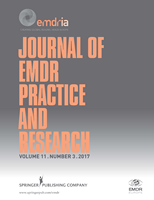
Use of the Flash Technique in EMDR Therapy: Four Case Examples
This article introduces the flash technique, a new technique used during the preparation phase of eye movement desensitization and reprocessing (EMDR) therapy to facilitate processing of intense, traumatic memories that clients might otherwise be resistant to access. Anecdotal evidence
suggests that this technique may make it possible for clients to access these memories initially in a minimally disturbing way, reducing their emotional intensity so that they can then be more easily and fully processed using EMDR therapy. The technique appears to be easily tolerated by clients
of all ages, including children; and to be rapid and relatively painless for clients, even those with particularly disturbing target memories; and can be easily taught to clinicians. It has the distinct feature that clients who are avoiding a terribly disturbing memory can be offered a way
of processing it without having to bring it clearly to mind. Four case examples, in which the technique was used by four different clinicians, are presented briefly. Suggestions are made for further study. This article hypothesizes various mechanisms of action and discusses the effects in
terms of memory reconsolidation theory.
Keywords: EYE MOVEMENT DESENSITIZATION AND REPROCESSING (EMDR); FLASH TECHNIQUE; MEMORY RECONSOLIDATION; SUBLIMINAL; TRAUMA; WORKING MEMORY
Document Type: Research Article
Publication date: 01 November 2017
- The Journal of EMDR Practice and Research is no longer available to subscribers on Ingenta Connect. Please go to http://connect.springerpub.com/content/sgremdr to access your online subscription to Journal of EMDR Practice and Research.
- Access Key
- Free content
- Partial Free content
- New content
- Open access content
- Partial Open access content
- Subscribed content
- Partial Subscribed content
- Free trial content